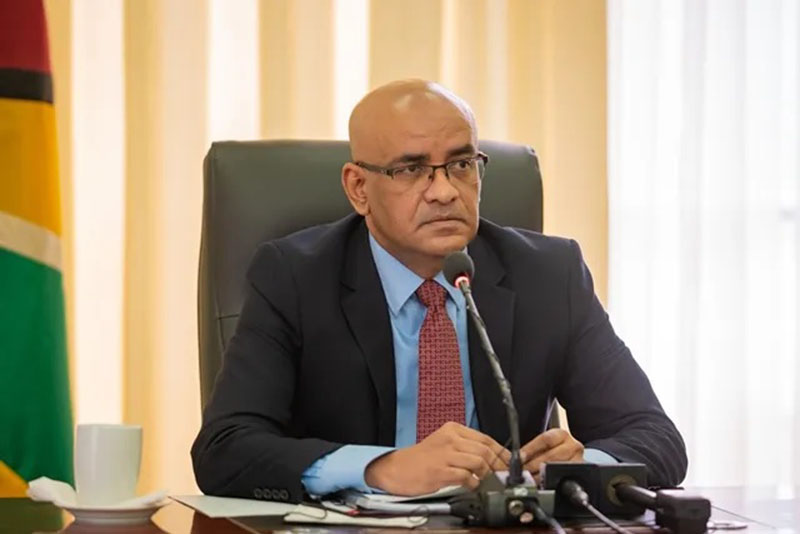ExxonMobil and its partners operating in Guyana’s Stabroek block have been granted a year’s extension for exploration in the block, Vice President Bharrat Jagdeo on Thursday confirmed.
Jagdeo noted that the government was approached by the consortium during the COVID-19 pandemic for an extension since the licence is due to expire in 2026.
“We have given approval for one year force majeure that was in the COVID period. So the relinquishment provision will shift by one year,” the Vice President said in response to a query from this newspaper.
International news outlet, Reuters, on Thursday reported that Hess is negotiating with the Government of Guyana for a one-year extension to 2027 of the oil exploration licence for the Stabroek Block.
During the JP Morgan Energy, Power and Renewables conference, Hess Chief Executive Officer, John Hess, explained “…During COVID, we really had a force majeure period where Exxon couldn’t even get workers in the country. We couldn’t run three rigs for exploration. So we took that exploration drilling pause. So, you know, I’m cautiously optimistic based upon our talks with the government that we’ll get that extra year out to 2027.”
He explained that in the next 12-18 months they will be involved in more drilling and appraisal work.
The Vice President also indicated that they have granted ExxonMobil a 10-year extension to their licence to supply gas for the gas-to-shore project. He explained with the plant set to come on stream in 2025, they would only have 12 years of supply while the project requires a 20-year of supply of gas.
The licence for the gas to be supplied was initially slated to expire in 2037.
“We are not in negotiations. We have agreed to do the extension of Liza 1 for that purpose to supply more gas for a longer period because we wanted that and then the force majeure that was given to them in the COVID period extends the relinquishment agreement…” Jagdeo explained.
He went on to state that government has to now sit and discuss with ExxonMobil the relinquishment agreement.
Hess, according to the Reuters’ report, said the group is ready to relinquish 20% of the Stabroek block, a contract requirement and it will not impact future production. Guy-ana’s government plans to put the areas back on the market.
“We pretty much already have identified the 20 per cent acreage that we would relinquish and it’s nothing material, nothing pros-pective,” he said. “We are ready for that.”
Hess says it also expects an increase in cash flow of 25 per cent per year for the next five years with oil remaining about $75 per barrel. The increase will stem primarily from its low-cost oil production in Guyana and in the Bakken shale field in the United States.
The first two production vessels can reach a combined peak production of 400,000 barrels per day (bpd) of oil and gas, against a designed capacity of 340,000 bpd, thanks to reservoir performance.
If the expectations for the next three platforms are confirmed, total production would exceed 1.2 million barrels per day of oil and gas projected by 2027.
The group is planning to move exploration to the northwest of the block in the next 12 to 24 months, away from the big oil accumulation discovered so far in the Southeast, Hess said.
“We are going to be starting to lengthen our horizons to look at potential for other wildcats,” he added.






